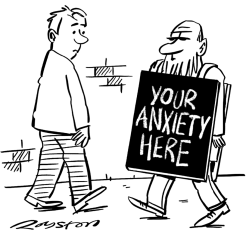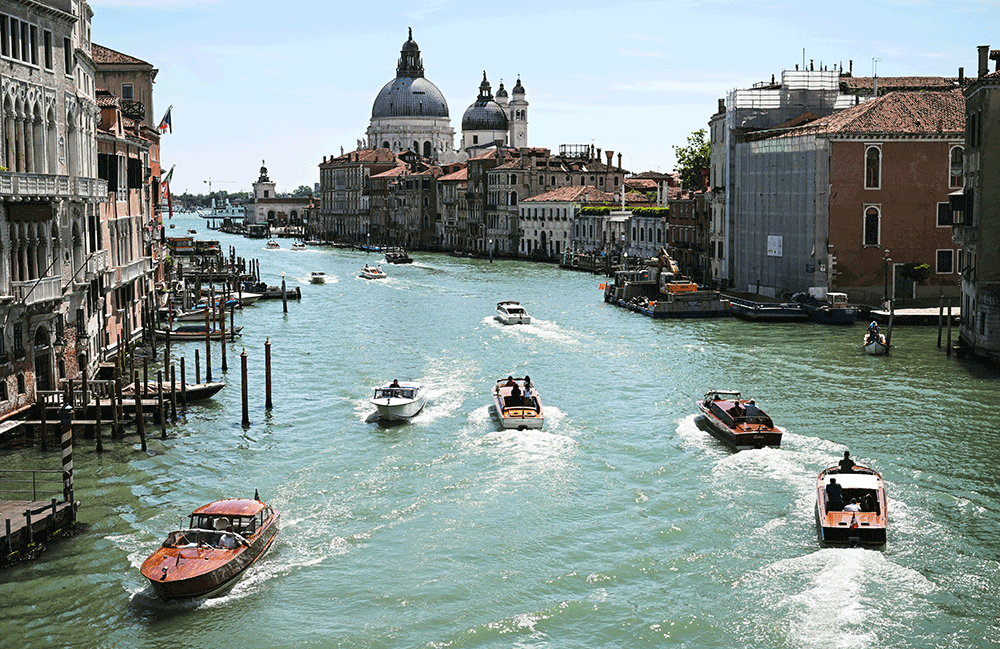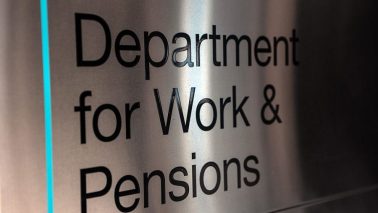
Venetians are once again revolting. Not, this time, against cruise ships, wheeled luggage, over-tourism or rule from mainland Mestre. No – according to a small but vocal contingent of the island city’s eternally discontented, it is Amazon’s billionaire founder Jeff Bezos who embodies all that threatens La Serenissima.
Bezos’s offence is that he is planning to marry Lauren Sánchez, a former TV journalist, in a three-day celebration in central Venice beginning on 24 June. His 250 guests will include many of the most famous and wealthy people on the planet. The celebrity-obsessed Italian press, deprived of such a world-class spectacle since George Clooney’s Venetian nuptials with Amal Alamuddin in 2014, is in a frenzy of anticipation.
Some Venetians, however, are less pleased. A giant ‘No to Bezos’ banner has appeared on the campanile of San Giorgio Maggiore, where the couple are rumoured to be exchanging vows. Lampposts have been plastered with flyers featuring an image of Bezos’s head on one of his Blue Origin space tourism rockets as it blasts into space. Dozens of activists are planning to protest against ‘turning the world heritage site – which has long suffered from the effects of excessive tourism – into a playground for the rich’, reports the Guardian. ‘There’s a lot of anger in the air because once again the council has enslaved itself to the logic of profit – our city has been sold to the highest bidder,’ activist Marta Sottoriva told the paper. ‘Every time an event of this kind happens, the city comes to a standstill, certain areas become inaccessible and even more tourists arrive. This wedding really is the symbol of all that is wrong with Venice.’
I have some shocking news for the Guardian, and for Ms Sottoriva. Venice was built by ruthless capitalists far more violent and rapacious than Bezos’s wildest imaginings. As for playgrounds of the rich, the great palazzi on the Grand Canal are literally nothing more than vast private entertainment complexes built by oligarchs – essentially multi-storey ballrooms with a few bedrooms in the attic. After the Doge’s palace, one of the city’s biggest public buildings is the Casino. And in its 16th-century heyday as the world’s capital of aristocratic decadence, of refined excess and sinful indulgence, the city boasted 20,000 licensed prostitutes paying taxes into the state coffers – close to 10 per cent of the population.
Venice was the Dubai of its day, an impossible city on a swamp made rich by the currents of international trade
There could be nothing more traditionally Venetian than pursuing profit, or the spectacle of filthy rich people partying. Indeed, the fact that all the Bezos revellers will be foreigners is also quintessentially Venetian. The great entrepôt on the lagoon was the Dubai of its day, an impossible city on a swamp made rich by embracing the currents of international trade. Venice was Europe’s first truly international city, boldly borrowing fashion, language, architecture and expertise from all over the known world.
Yet many of the remaining 49,000 locals seem to have forgotten the buccaneering spirit of the once-great city they call home. Their vision, it seems, is of Venice as a small, sleepy provincial Italian town. ‘This wedding is causing much friction, especially because it is happening at a time when Venice, already invaded by uncontrolled tourism, is completely worn out,’ whines Giovanni Andrea Martini, a local councillor. To make up for the alleged disturbance to the quiet life of the city, Martini would like Bezos to help address the affordable housing shortage by donating money towards restoring the more than 1,000 city council-owned properties that are currently uninhabited.

A familiar complaint often heard from Barcelona to Berlin is that Airbnb tourism is forcing the locals out of town. Yet at the moment of writing, there are more than 100 properties for rent in central Venice for under €1,500 a month on immobiliare.it, Italy’s biggest property site. The largest of these is a 120 square metre, three-bedroom, two-bathroom place near the Rialto bridge for €1,300. Expensive, indeed, by provincial Italian standards – but cheaper than Milan or Rome. The real problem is that there are no jobs in Venice outside the tourism sector and public service – and many locals have made a choice to commute from nearby suburbs where the houses are bigger and the living easier. The real reason 1,000 council-owned properties stand empty is that demand for social housing on the islands of Venice is dwindling. Even the city’s only hospital, San Marco, has been downgraded to a clinic for lack of demand.
The claim that Venice is creaking from over-tourism has had campaigners wringing their hands for years – and has this year led to the introduction of a city-wide €5 entrance fee for all summer day-trippers. To the enormous irritation of locals, fee payment is checked by officious out-of-towners in tabards whose salaries consume the entirety of the money collected. Anyone visiting the city has to register on a site or risk a €300 fine.
But look more closely at those numbers and the claim that Venice is dangerously overcrowded is nonsense. The city hosts some 20 million visitors a year, 80 per cent of them day-trippers, with peak numbers of 119,000 a day. Add the notional 49,000 locals and that’s 168,000 human beings packed into Venice’s 2.7 square miles. But if that sounds like a lot, compare it with 1576, when there were 180,000 residents. In other words, Venice today is actually less crowded than it was in the 16th century.
It’s time for the moaning Venetians to embrace their city’s international heritage and acknowledge that she now belongs as much to the world as to them. As she always has.








Comments